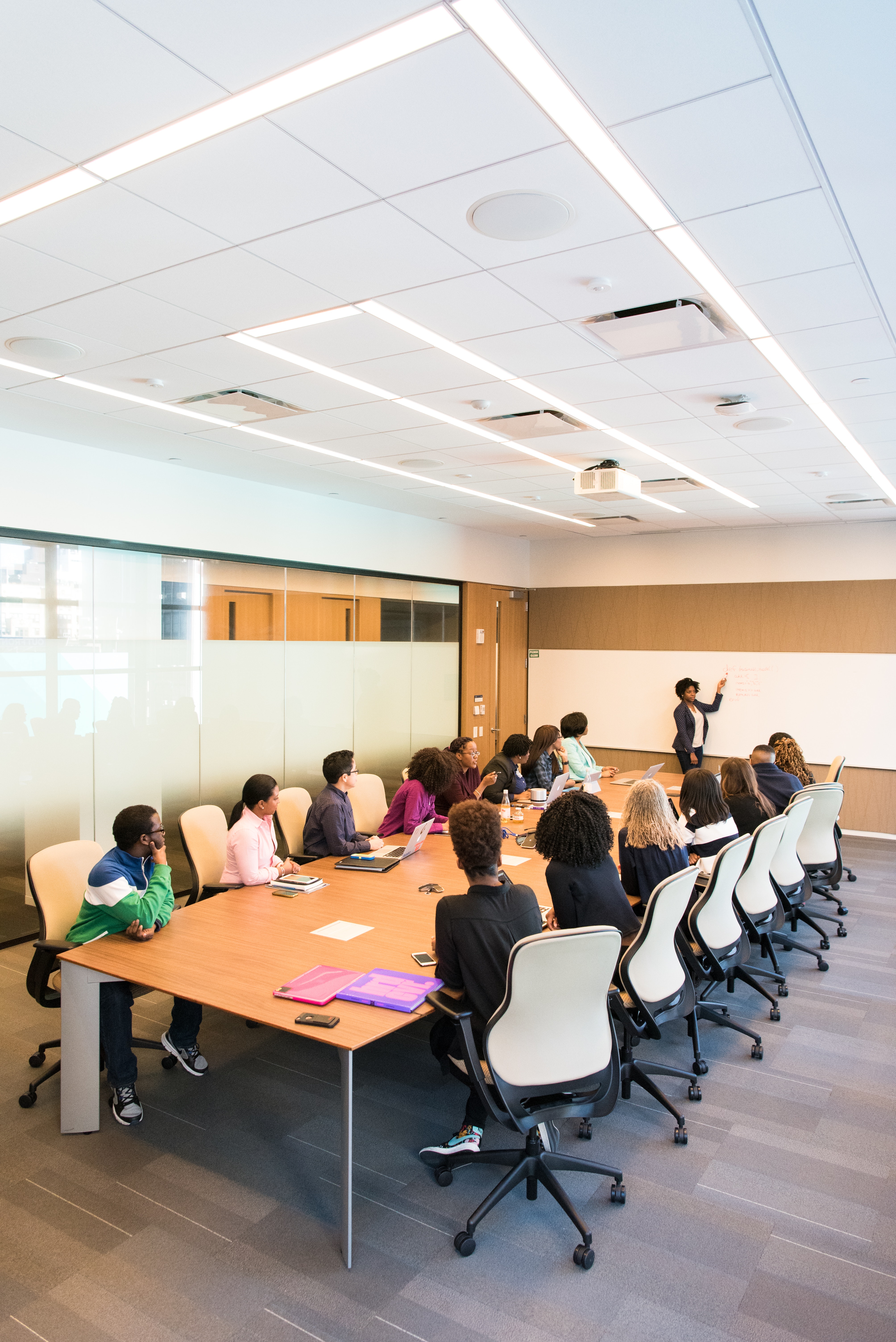Qualitative vs. quantitative research: What's the difference?
Quantitative research is designed to collect data points in a numerical form. Qualitative research lean more on the observation and collection of...
Tonic3 develops and executes strategies that drive profit through Digital Transformation. Practically that means we are built to help clients hone the right strategy, implement the right technology, and build the right long-term capabilities to deliver lasting transformation.
Industries
We believe that effective technology helps people succeed in their daily lives. So we help our clients engineer useful technology for their clients, partners, and employees. That translates to every major industry, but over the years we’ve developed several core areas of expertise.
The success of a product/service has always depended on how its consumers perceive it.
However, today, with the internet at our fingertips all day long, this applies to digital interfaces, where users evaluate the fluidity of their journey. In this way, the user is constantly faced with product and service interfaces.

These platforms lead the user to experience different experiences and to have different perceptions. We therefore call this "journey" a user experience (UX).
A good UX experience must therefore be based on an understanding of the target's needs.
In this sense, UX Research aims to understand the user through several processes and methods that will allow to develop interfaces adapted to the user so that he has the best possible experience.
Therefore, the UX Researcher is the professional in charge of identifying the needs of the users by referring to qualitative and quantitative methods.
His work is the basis of UX to the extent that it allows the team to make the best decisions and create user-centric interfaces.
Need UX Research? Let us help you and show you how you can implement Research & Insights for your business!
UX research is part of the design process (UX Design). It is a way to collect qualitative and quantitative data to determine user needs.
Numerous techniques, from cognitive sciences and human sciences, allow to obtain this information.
The results of the investigations feed the team's reflection and future choices in interaction design and interface design. User research can be carried out:
Often, UX Research refers to user testing, i.e. the evaluation of websites and mobile applications tested with representative users.
In reality, these usability tests are one UX Research method among others.
However, the meaning of UX research can differ between its different users as it will not represent the same thing for a marketing team, where it will be used as a validation or testing process to communicate a certain message or for a brand design, as for a product team where its objective will be to validate concepts and prototypes.
The UX designer has an important toolbox to perform UX research. Some UX techniques are relatively inexpensive and require minimal personal investment. Others require significant preparation.
Whatever the case, they can be used throughout the life of the UX project.
Upstream (and sometimes downstream) of the design:
To organize the information architecture with the users of the website or application:
In the analysis phase, but also in the design phase to have user archetypes:
During the analysis or evaluation of the usability of interfaces:
In terms of the type of UX research, we have quantitative research and qualitative research.
Qualitative UX research is the study of human behavior focusing on context and detailed observation rather than statistical data.
Examples of qualitative methodologies:
Quantitative UX research is the study of human behavior focusing on statistical data.
Examples of quantitative methodologies:
The quality of the user experience comes from identifying the expectations and needs of end users.
User research is needed to identify the socio-economic factors behind each user's behavior, and to discover:

In addition to offering a better user experience, UX Research benefits companies because it allows them to:
User research therefore has an impact on the entire UX process. Many methods and methodological tools can be used.
Need UX Research? Let us help you and show you how you can implement Research & Insights for your business!
The advantages of UX Research are numerous. They are beneficial for both the user, a key factor in the development of the solution, and for the company itself.
What are the benefits for the user? The benefits lie in:
What are the benefits for the company?
Designing better products:
Empathy is now at the heart of design, it’s useful to design a product without knowing the behaviors and feelings of the target users. Doing research on the user is the surest way to understand him and identify his needs.
With the help of UX Research, it is possible to create designs that are perfectly suited to the users, relevant, easy and pleasant to use.
These techniques avoid designing a bad product, unsuited to the target.
A product that does not meet the needs of its users is not and will never be a success!
When done properly, research can eliminate all guesswork from the design process and improve the design. Ideas and assumptions will be validated or invalidated. User approval of the solution will be guaranteed.
The designed interfaces are characterized by a high level of usability, and a minimum of positive UX feedback will be ensured.
UX research is therefore an essential process in product design, but also in a good business strategy. It illuminates and expands the realm of creative possibilities.
Save time and money:
One of the main reasons why the creation of a product/service fails is the company's prior assessment of the non-necessity of undertaking user research before designing the digital interface.
Indeed, starting from ideas and hypotheses conceived in advance on the needs of the target users, is inevitably to find oneself in the end faced with unsuitable solutions with usability problems and very far from the real needs of the final customers.
Using UX Research means being aware of all the difficulties from the start in order to minimize the risk of failure.
The research phase contributes to offer an interface designed on real needs, not on assumptions that can be misleading.
The product launched, based on information collected from future users, will have every chance of being adopted by them.
No more doubts, you save time and optimize development costs at the same time.
Can be done with a limited budget:
To limit expenses, there are many methods to perform quick and much less expensive user research.
Investing even a small budget in UX Research allows you to save on development costs and possible modifications of the final product.
User research can be used either at :
There is no precise and defined process of UX research as it varies depending on the research methods used.
Therefore, the process will not be the same for focus groups than for usability testing.
Indeed, the objective of focus groups is to gather as much information as possible in a short period of time, whereas the objective of usability testing is to evaluate a product or service by using it with several users in order to identify usability problems, collect quantitative data and determine the user's satisfaction with the product.
The role of a UX researcher is to get to know the users in the context of usage. He brings to the UX team valuable information to ensure a solid interface design.
His main mission is to collect (and restore) this information using quantitative and qualitative methods.
He/she must therefore have real skills in human sciences and master different UX research tools and methods.
The UX Researcher will conduct a methodical investigation of users and their needs.
He uses a variety of techniques, tools and methods to determine facts, uncover problems, reach conclusions, thus revealing information that can be used in the design process.
In this way, he or she has a major role in leading UX research. Here are his main tasks:
Research strategy
Research Planning
Data Collection
Data analysis
Presentation of the results
Manage the research and support the UX Design team
User research allows us to focus on the real needs of visitors to identify potential problems and suggest design solutions. In other words, without UX research, there is no UX and we would end up with a design process based on assumptions and hypotheses!
Without UX research and without validating the hypotheses, the result would not necessarily meet the user's real needs.
UX Research is an essential part of the user-centered design process and it is a determining step in UX Design.
Need UX Research? Let us help you and show you how you can implement Research & Insights for your business!

Quantitative research is designed to collect data points in a numerical form. Qualitative research lean more on the observation and collection of...

Today, many factors are involved when interacting with a customer via a website.

We know that trends in the digital world change year by year. If we talk about web design and UX design, next year there will be great innovations in...
